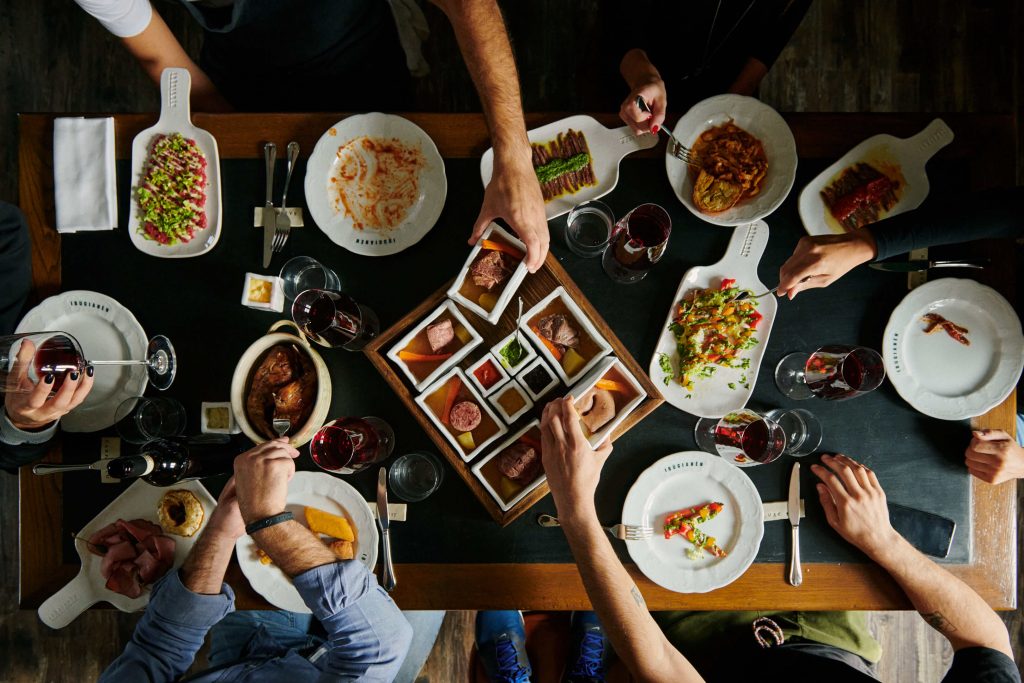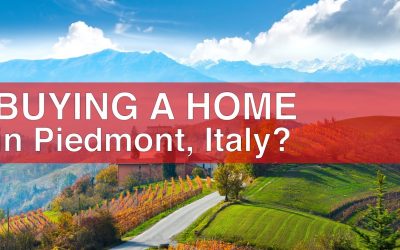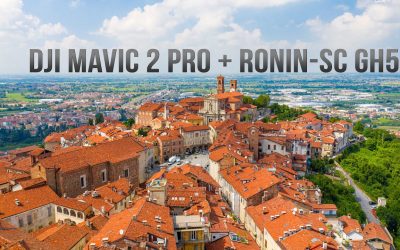Piedmont’s Gastronomic Typical Dishes in Italy’s Piedmont Region
Welcome to Piedmont, Italy, a region renowned for its rich gastronomic culture. From iconic dishes to unique flavors, Piedmont offers a tantalizing culinary experience that is sure to captivate your taste buds. In this article, we will take you on a journey through Piedmont’s gastronomy, exploring its traditional dishes, celebrated raw materials, certified local products, and exceptional wines. Get ready to discover the pillowy pasta pockets of Agnolotti, the unique fondue of Bagna Cauda, and the art of hand-chopped steak in Battuta al Coltello.
Indulge in the meat lover’s delight of Bollito Misto alla Piemontese and savor the delicious chocolate pudding of Bonet. We will also introduce you to the rich offal dish of Finanziera and Piedmont’s take on Russian salad with Insalata Russa. Don’t miss the opportunity to sample the thin, golden noodles of Tajarin and the unusual combination of veal and tuna in Vitello Tonnato.
Along the way, we will also explore Piedmont’s celebrated raw materials, such as the Hunchback Cardoon and the Hazel of Piedmont. And of course, we cannot forget to dive into Piedmont’s wine excellence, with its sparkling pride, Asti Spumante D.O.C.G, and quintessential red wine, Barbera d’Asti D.O.C.G. So join us as we delve into Piedmont’s gastronomic treasures and encourage you to explore and savor the delights of this remarkable region.
Introduction: Exploring Piedmont’s Gastronomy

Piedmont, a region located in northwest Italy, is renowned for its rich gastronomic culture. Its cuisine reflects a deep respect for tradition, with dishes that have been passed down through generations. Exploring Piedmont’s gastronomy is like embarking on a culinary journey that showcases the region’s unique flavors and ingredients. Piedmont’s typical dishes are a testament to the region’s culinary heritage. One such dish is Agnolotti, a type of pasta that is filled with various ingredients such as meat, cheese, or vegetables. These pillowy pasta pockets are often served with a simple sauce, allowing the flavors of the filling to shine through.
Bagna Cauda is another iconic Piedmontese dish that stands out for its uniqueness. It is a fondue-like dish made with garlic, anchovies, olive oil, and butter. The ingredients are slowly cooked together until they form a rich and creamy sauce, which is then used as a dip for vegetables and bread.
Battuta al Coltello is an art form in Piedmont. It involves hand-chopping high-quality beef to create a tender and flavorful steak tartare. The meat is seasoned with salt, pepper, and olive oil, and served with a side of bread or salad. For meat lovers, Bollito Misto alla Piemontese is a must-try dish. It is a meat lover’s delight, featuring a variety of boiled meats such as beef, veal, and
Taste of Tradition: Piedmont’s Iconic Dishes

Nestled in the heart of Italy, the Piedmont region is a culinary paradise renowned for its tantalizing flavors and premium ingredients. This region boasts an array of traditional products that tell the story of its history, culture, and gastronomic expertise. From the delicate taste of the Piedmont Hezelnuts or in Italia Nocciola del Piemonte I.G.P. to the robust flavor of wine Barbera d’Asti D.O.C.G. wine, every bite and sip promise an unforgettable journey. But Piedmont’s culinary prowess isn’t just about its products. It’s about the fusion of exceptional raw materials, traditional recipes, and contemporary innovation. Let’s dive deep into some of the iconic offerings of this region.
| Category | Product/Ingredient |
|---|---|
| Materie prime (Raw Materials) | Cardo Gobbo, Nocciola del Piemonte I.G.P., Peperone Quadrato, Robiola di Roccaverano D.O.P., Tartufo Bianco |
| Prodotti tipici (Typical Products) | Agnolotti, Bagna Cauda piemontese, Battuta al coltello, Bollito Misto alla piemontese, Bonet piemontese, Finanziera, I Prodotti De.Co., Insalata Russa, Tajarin Piemontesi, Vitello Tonnato |
| Vini (Wines) | Asti Spumante D.O.C.G., Barbera d’Asti D.O.C.G., Moscato d’Asti D.O.C.G., Le altre eccellenze vinicole: i bianchi di Asti D.O.C.G. e D.O.C., Le altre eccellenze vinicole: i rossi di Asti D.O.C.G. e D.O.C. |
When in Piedmont, every meal becomes an opportunity to delve into centuries-old traditions while embracing new culinary discoveries. It’s a gastronomic journey that every food lover should experience.
Wine and Dine: The Inseparable Duo
While Piedmont is celebrated for its delectable dishes, it is equally famed for its vineyards that produce some of Italy’s finest wines. The regions of Langhe, Roero, and Monferrato, in particular, are renowned for their picturesque vineyards and high-quality produce. Dive into a detailed exploration of these vineyards and learn about the wine-making process, regional variations, and more in our in-depth guide on Langhe, Roero and Monferrato vineyards. And for those with a taste for luxury, don’t miss our curated tours of 3 Michelin Star Restaurants in Italy that promise an unparalleled dining experience.
The Pinnacle of Piedmont Cuisine: Michelin-Starred Restaurants
Piedmont takes pride not just in its traditional dishes but also in its world-class dining establishments. For those looking to savor the finest that the region has to offer, we’ve compiled a list of 44 Michelin-Starred Restaurants for 2023 that have carved a niche in Piedmont’s culinary landscape. Specific cities in Piedmont, like Turin and Alba, house gems that have been recognized and awarded for their gastronomic excellence. Explore Turin’s Best Michelin Restaurant in 2023 and discover the top-rated Michelin Starred Restaurant in Alba, Italy, for 2023 to embark on a culinary journey like no other.
Agnolotti: Piedmont’s Pillowy Pasta Pockets
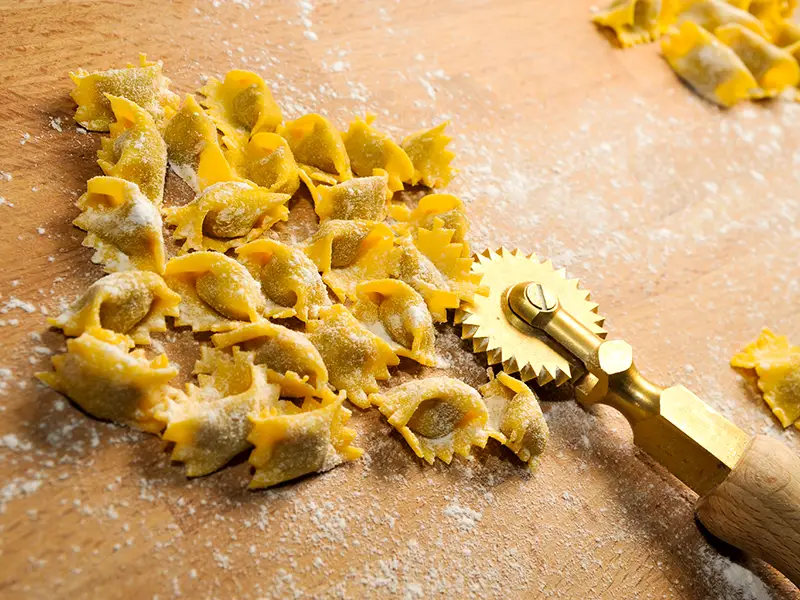
Agnolotti is one of Piedmont’s most iconic dishes, known for its pillowy pasta pockets that are filled with a variety of delicious ingredients. This traditional dish has been enjoyed by locals for centuries and is a must-try for anyone visiting the region. The origin of agnolotti can be traced back to the 13th century, and it has since become a staple in Piedmontese cuisine. The pasta dough is made with flour, eggs, and a pinch of salt, resulting in a delicate and light texture. The filling can vary, but it typically includes a combination of meat, vegetables, and cheese.
One popular variation of agnolotti is agnolotti del plin, which translates to “pinched agnolotti.” These small pasta pockets are meticulously hand-folded and pinched together, creating a unique and beautiful shape. This technique requires skill and precision, making each agnolotti a work of art.
The filling for agnolotti can include a range of ingredients, such as roasted meats, spinach, ricotta cheese, or even pumpkin. Each filling adds its own distinct flavor and texture to the dish. Agnolotti are often served with a simple sauce, such as a butter and sage sauce, allowing the flavors of the pasta and filling to shine. Piedmont is home to many exceptional restaurants and trattorias where you can enjoy authentic agnolotti. Discover the best cooking class in Piedmont Region, Italy.
Bagna Cauda: A Unique Piedmontese Fondue

One of the standout dishes of Piedmont’s gastronomy is Bagna Cauda, a traditional fondue that is deeply rooted in the region’s culinary heritage. Bagna Cauda translates to “hot bath” in Italian, and true to its name, it is a warm and flavorful dish that is perfect for dipping a variety of vegetables.
The main ingredients of Bagna Cauda are garlic, anchovies, olive oil, and butter. These ingredients are slowly cooked together, allowing the flavors to meld and create a rich and aromatic sauce. The sauce is traditionally served in a special terracotta pot called a “fujot,” which keeps it warm throughout the meal. To enjoy Bagna Cauda, diners gather around the pot, which is placed in the center of the table. A variety of vegetables, such as cardoons, artichokes, peppers, and carrots, are prepared and served alongside the sauce. Each vegetable is dipped into the Bagna Cauda, allowing the sauce to coat the vegetable and enhance its natural flavors.
The combination of the pungent garlic, salty anchovies, and silky olive oil creates a unique and irresistible taste that is characteristic of Piedmontese cuisine. The dish is often enjoyed as a communal meal, bringing people together and creating a convivial atmosphere.
Carne Battuta al Coltello: The Art of Hand-Chopped Steak in Piedmont
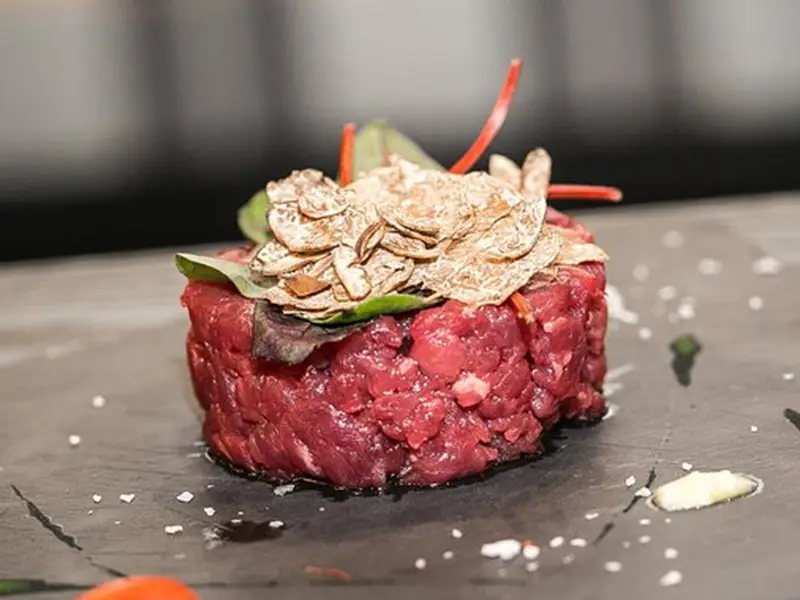
Battuta al Coltello is a traditional Piedmontese dish that showcases the art of hand-chopped steak. This delicacy is made by finely mincing high-quality raw beef and seasoning it with salt, pepper, and sometimes garlic. The meat is then carefully chopped by hand using a large, sharp knife, resulting in a unique texture and flavor. The key to a perfect Battuta al Coltello lies in the quality of the beef. Piedmont is known for its excellent beef, particularly the Fassona breed, which is renowned for its tenderness and flavor. The meat is typically sourced from trusted local farms, ensuring that only the best cuts are used for this dish.
Once the beef is minced and seasoned, it is then meticulously chopped by hand. This process requires skill and precision, as the aim is to create a consistency that is finely textured but not overly ground. The technique involves using a rhythmic chopping motion to evenly distribute the flavors and create a melt-in-your-mouth experience.
The result is a dish that is both simple and sophisticated, allowing the natural flavors of the beef to shine through. Battuta al Coltello is often served as a starter or main course, accompanied by traditional Piedmontese side dishes such as raw vegetables, pickles, and bread. This dish is not only a testament to the culinary traditions of Piedmont but also reflects the region’s focus on using high-quality, locally sourced ingredients.
Bollito Misto alla Piemontese: A Carnivore’s Paradise

Bollito Misto alla Piemontese is a dish that perfectly exemplifies Piedmont’s rich gastronomic culture. Translated as “Mixed Boiled Meats in the Piedmontese Style,” this carnivore’s paradise is a true delight for meat lovers. The dish consists of a variety of meats, typically beef, veal, chicken, and pork, which are simmered together in a flavorful broth until tender and succulent. The meats are traditionally served with a selection of sauces, such as salsa verde (green sauce), mostarda di Cremona (a spicy fruit mustard), and bagnetto verde (a tangy green sauce with garlic and anchovies).
What sets Bollito Misto alla Piemontese apart is the attention to detail in the preparation. Each type of meat requires a specific cooking time to achieve the perfect texture and flavor. The traditional method involves layering the different meats in a large pot, starting with the tougher cuts and adding the more delicate ones as the cooking progresses.
This dish is often served as a main course during festive occasions and celebrations in Piedmont. It is a true feast for the senses, with the rich aromas of the simmering broth and the tender meats tantalizing the taste buds. Bollito Misto alla Piemontese is not only a delicious dish but also a cultural symbol of the region.
Piedmontese-Style Braised Tripe
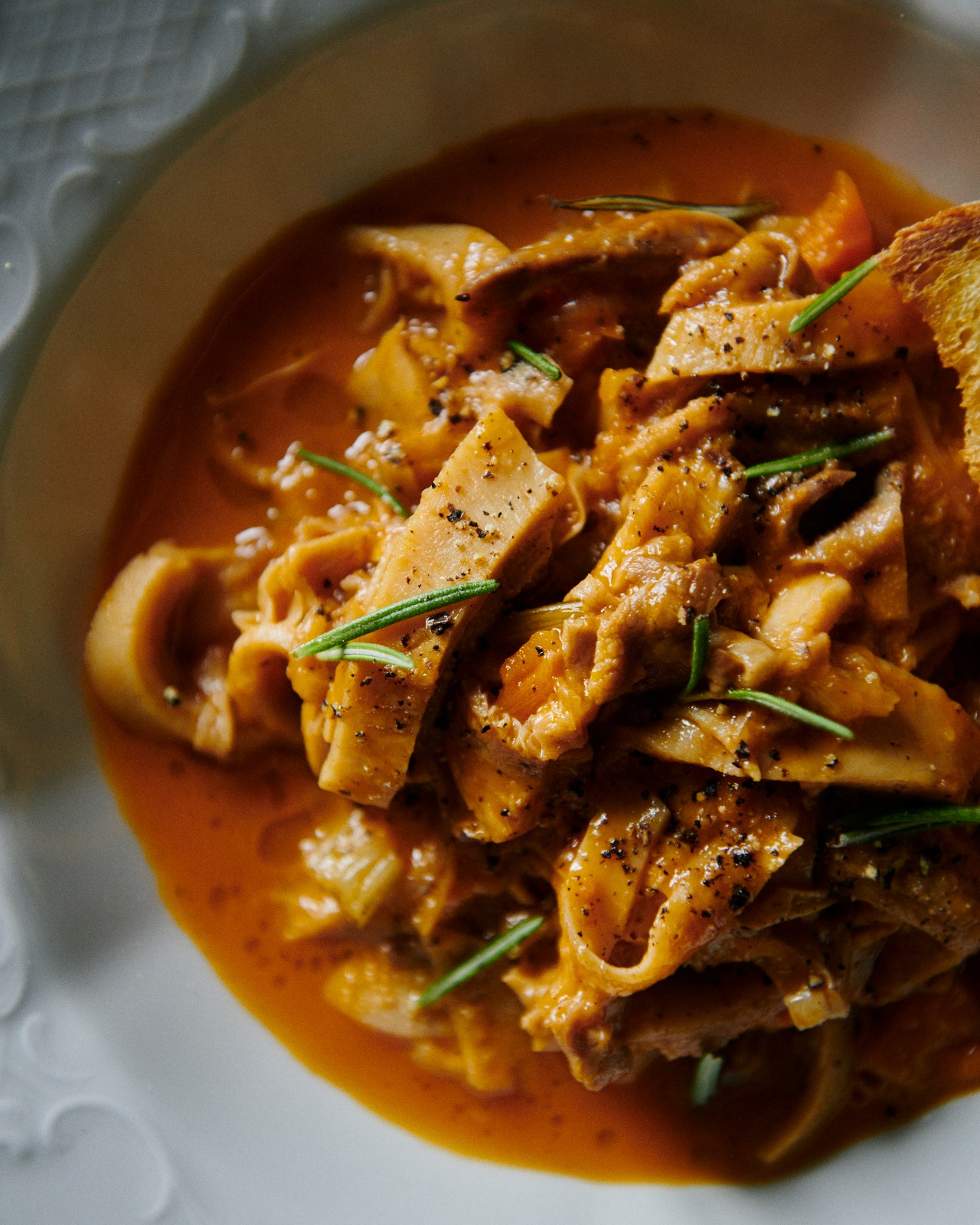
In Italy’s culinary panorama, each region boasts its distinctive recipes that fuse tradition with unique local flavors. Among such dishes from the Piedmont region is the “Trippa in Umido alla Piemontese” – a hearty, braised tripe stew that resonates with history and the comforting aromas of home-cooked meals.
rippa in Umido alla Piemontese is a traditional dish from the Piedmont region of Italy, comprising tripe slow-braised in a flavorful tomato and wine sauce. Known for its tender texture and deep, rich flavors, this stew is a testament to Piedmont’s ability to elevate humble ingredients into gourmet experiences.
Piedmontese cuisine often draws from its lush, hilly terrains and its agricultural riches. With the “Trippa in Umido,” it turns the often-overlooked tripe into a delicacy by slow-cooking it in a rich tomato-based sauce infused with aromatic herbs and wine. Over time, the tripe becomes tender, absorbing the depth of flavors from the sauce, resulting in a dish that is both rustic and deeply satisfying.
Top-Rated Restaurants in Piedmont: Where Tradition Meets Excellence
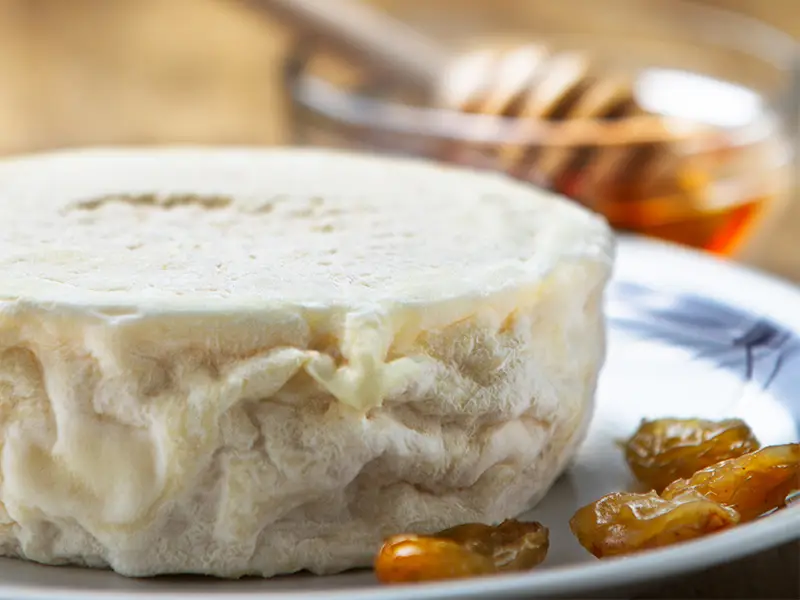
Piedmont, a culinary haven, boasts an array of restaurants that offer an authentic dining experience. Among the must-visit eateries are Osteria del Borgo, Moderno, and Vascello d’Oro in Carrù, known for their exquisite interpretations of regional dishes.
In Asti, I bugianen stands out for its impeccable service and local delights. Farigliano’s Speranza, Bra’s Boccondivino, and Neive’s Luna nel Pozzo are other notable mentions. For those venturing to Vernante, Nazionale offers a menu filled with Piedmontese classics.
Moncalvo’s Centrale and Turin’s Tre Galline and San Giors round up the list, each providing a unique culinary journey that embodies the essence of Piedmontese cuisine. These establishments not only serve mouthwatering dishes but also tell tales of a region deeply rooted in its food culture.
Bonet: Piedmont’s Indulgent Chocolate Pudding
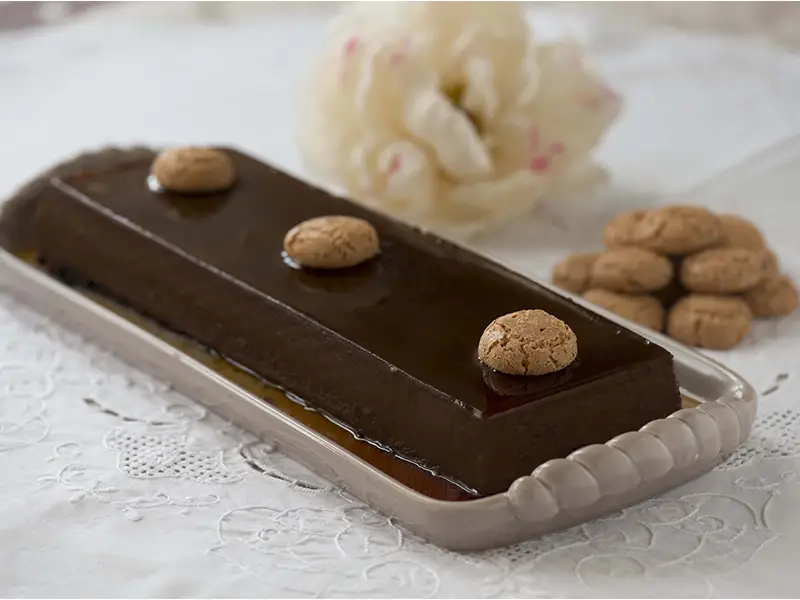
Bonet is a delectable dessert that hails from the Piedmont region of Italy. This indulgent chocolate pudding is a beloved traditional dish that showcases the rich gastronomic culture of Piedmont. Bonet is made with a combination of ingredients that are commonly found in Piedmont, including amaretti cookies, cocoa powder, sugar, eggs, milk, and rum. The dessert gets its name from the Piedmontese word “bonèt,” which means “hat” in Italian. The name is fitting as the dessert is typically served in a rounded mold that resembles a hat.
The preparation of Bonet involves a simple yet meticulous process. First, the amaretti cookies are crushed and mixed with cocoa powder, sugar, and a hint of rum. Then, eggs and milk are combined and slowly poured over the cookie mixture, creating a smooth and creamy consistency. The dessert is then baked in a water bath, allowing it to cook evenly and develop a velvety texture.
The result is a luscious chocolate pudding with a distinct flavor profile. The amaretti cookies add a subtle almond taste, while the cocoa powder provides the rich chocolatey notes. The addition of rum adds a touch of warmth and depth to the dessert, making it truly indulgent. Bonet is typically served chilled, allowing the flavors to meld together and the pudding to set. 8. Finanziera: Discovering Piedmont’s Rich Offal Dish
Finanziera: Discovering Piedmont’s Rich Offal Dish
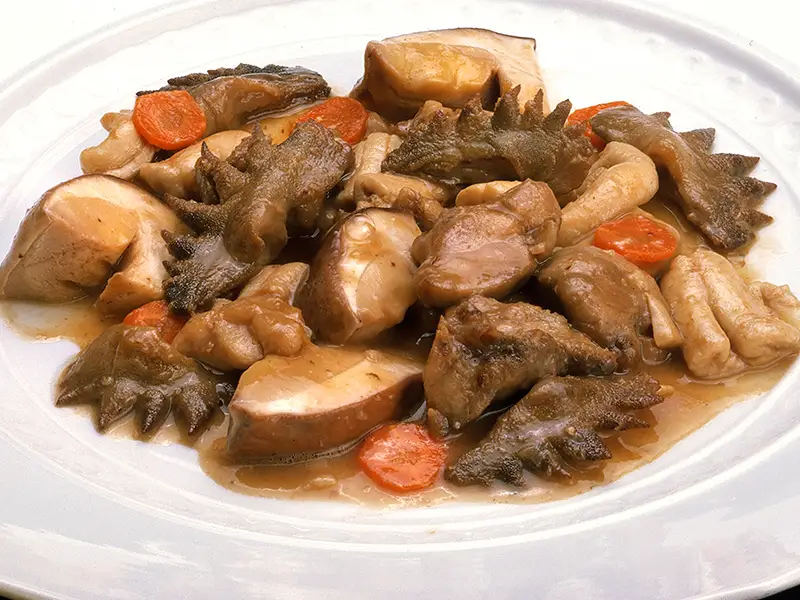
One of the most unique and intriguing dishes in Piedmont’s gastronomy is Finanziera. This traditional dish showcases the region’s love for using offal, or organ meats, in their cuisine. Finanziera is a rich and flavorful stew made with a variety of offal such as chicken livers, veal sweetbreads, cockscombs, and testicles. While it may sound adventurous to some, it is a true delicacy for the Piedmontese.
The origins of Finanziera can be traced back to the 18th century when it was a favorite among the wealthy and aristocratic families of Piedmont. The dish was named after the financial administrators, known as “financiers,” who would indulge in this extravagant and luxurious meal. Over the years, it has become a staple in Piedmontese cuisine, enjoyed by both locals and visitors alike.
The unique combination of flavors and textures in Finanziera is what sets it apart. The chicken livers add a rich and velvety taste, while the sweetbreads provide a delicate and creamy texture. The cockscombs and testicles bring a unique and slightly chewy element to the dish. All these ingredients are simmered together with onions, white wine, and a variety of aromatic herbs and spices, creating a delightful symphony of flavors.
Insalata Russa to Tajarin: Unique Flavors of Piedmont’s Cuisine

Piedmont, located in northern Italy, is renowned for its rich gastronomic culture which showcases a unique blend of flavors and ingredients. From the delicious Agnolotti pasta pockets to the unusual combination of veal and tuna in Vitello Tonnato, Piedmont’s cuisine offers a range of dishes that are sure to tantalize the taste buds.
One of the standout dishes in Piedmont’s gastronomy is Insalata Russa, a twist on the traditional Russian salad. Made with a combination of boiled vegetables such as potatoes, carrots, and peas, mixed with mayonnaise and often garnished with tuna or ham, Insalata Russa is a delightful and refreshing salad that perfectly represents the region’s culinary creativity. Moving on to pasta, Tajarin is a must-try dish in Piedmont. These thin, golden noodles are made with egg yolk-rich dough and are often served with a simple butter and sage sauce or with a rich meat ragù. The delicate texture and rich flavor of Tajarin make it a beloved dish among locals and visitors alike.
Piedmont’s cuisine also boasts a variety of unique flavors through its use of local ingredients. The region’s Hunchback Cardoon, known as Cardo Gobbo, is a thistle-like vegetable that adds a distinct taste to many Piedmontese dishes. It is often used in soups or braised and served as a side dish.
In conclusion
Piedmont’s gastronomy is a treasure trove of flavors and traditions. From the iconic dishes like Agnolotti and Bagna Cauda to the unique flavors of Battuta al Coltello and Finanziera, Piedmont offers a culinary experience like no other. The region’s celebrated raw materials, such as Cardo Gobbo and Tartufo Bianco, further contribute to its rich gastronomic culture.
And let’s not forget about the outstanding wines, like Asti Spumante and Barbera d’Asti, that perfectly complement these delectable dishes. So, whether you’re a food lover or a wine enthusiast, Piedmont is a destination that should not be missed. Explore its culinary delights, indulge in its traditional flavors, and immerse yourself in the gastronomic wonders of this beautiful region. Buon appetito!
